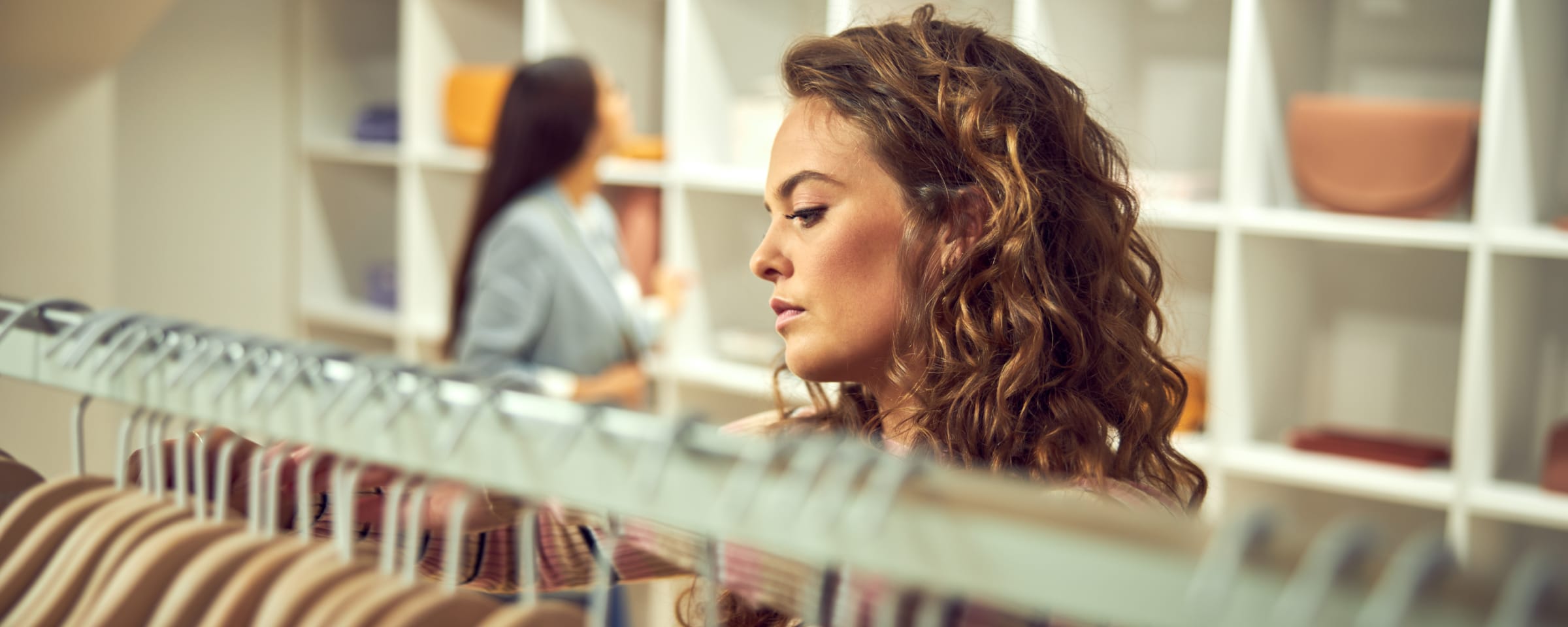
Consumer survey
62% ~ I go out of my way to visit retailers that make shopping easy
73% ~ Retailers should continue to sell across multiple channels
52% ~ Store layout is important and should be curated more like a gallery
72% ~ When shopping online, ease is as important as product
73% ~ Retailers that sold online during the pandemic should continue
Strongly agree / Agree
Neither Agree nor disagree / Don’t know
Disagree / Strongly disagree
Before March 2020, no one could have expected car manufacturers to transform themselves into ventilator producers so quickly. Or governments around the world to rip up their budgets and release vast sums of money to bolster economies during lockdowns. In the same way, businesses have been forced to accelerate the changes they were calmly rolling-out over a three-year period. For many consumers, this has been a positive change. Suddenly a wealth of flexible, cross-channel journeys has been made available to them by necessity. Curbside pick-up has helped many stay in business during lockdown periods and consumers are now accustomed to pre-ordering their lattes and collecting online purchases in store.
Technology has given businesses the agility to pivot fast, adapting to market conditions as they change, and keeping their customers happy. And it’s technology that will ensure they’re ready for whatever’s next.
“Concerns over health and safety have accelerated the adoption of digital channels. And, once customers see how convenient and safe the app is, they stick with it. For example, once you’ve downloaded our pre-order app, you have your order history and your credit card details stored. So future orders are really easy. That’s why we’ll see these digital channels prevail beyond the pandemic. They are safe and convenient. And convenience wins every time.”
Thomas Evald ~ VP - Strategy & Business Development, Joe & The Juice
Let your customers call the shots
Customer journeys are evolving all the time. What used to be online or in store is now click and collect, cross-channel returns, endless aisles, in-app food orders, pay-at-table... it goes on. There are also new sales channels appearing all the time. From smart speakers to smart cars and shoppable social media posts, buying can happen from anywhere. Businesses were already under a lot of pressure to offer flexibility to consumers. Now it’s sink or swim. Our research shows that consumers increasingly expect a unified customer experience wherever or however they choose to buy.
"It’s important to give customers total flexibility. They can pre-order in-app, they can order in store, they can pay via the terminal or in app. It's really their choice.”
Thomas Evald ~ VP - Strategy & Business Development, Joe & The Juice
say they would be more loyal to retailers if they would let them purchase an out-of-stock item in store and have it delivered to their home
say they would be more loyal to a retailer that lets them buy things online and return them in-store
would be more loyal to a retailer that lets them shop in store and finish shopping online, or vice versa
Amazing experiences win the day
We’ll never tire of saying it, offering a great customer experience is paramount to business success. In fact, now you could argue it’s more important than ever, especially when you’re looking to secure the loyalty of a more selective consumer. Seven out of ten global consumers say they won’t return if they have a bad experience either in-store or online. And more than half will go out of their way to visit stores that make shopping easier for them.
say they won’t shop with retailers where they’ve had a bad shopping experience either in-store or online
Online: Easy does it
Our consumer survey is clear: A bad online shopping experience will lose you business. The vast majority of global shoppers believe that ease of experience is as important as the quality of the product. And clunky experiences with too many steps to pay, not enough or irrelevant payment methods, or a sluggish authentication process will let you down.
“Payments are critical from a customer experience perspective. It’s often simple things that make the experience more elegant. They've been crucial during the pandemic and will continue to be so."
Robbie Tutt ~ GM Digital and Technology, Aesop
If your ecommerce site was an afterthought, now’s the time to turn that around and watch your conversions soar. There are many elements that make up a great online shopping experience, but your payment pages are a good place to start.
% that say that when shopping online, the ease of use is as important as the quality of the product
Global
72%
APAC
80%
Brazil
86%
Europe
70%
US
65%
Beautiful checkouts
Where possible, keep the customer on your site and host the payment in your own environment. If redirects are necessary (in the case of chatbots or social media) make sure the payment page is consistent with your brand. Give your customers a relevant choice of payment methods based on their location and even the existing wallets they have installed on their phone. And whatever you do, design your checkout as mobile-first.
will abandon their cart if there are too many steps in the checkout
like to have a range of payment options available to them
expect the payment authentication process to be fast and require no action from them
Secure payments
Managing payment fraud can be tricky. Set your risk settings too low and you’ll leave your business vulnerable. Set them too high and you may inadvertently block legitimate customers. Use a smart risk system that uses data and machine learning to automatically find the perfect balance between security and conversion.
Note on Strong Customer Authentication:
No ecommerce strategy is complete without a clear plan for Strong Customer Authentication (SCA), especially since consumers expect the process to be fast, requiring no action from them. There’s no one-size-fits-all approach to applying SCA, but the right technology partner will take care of this for you.
In store: A journey worth making
We’ve already seen that consumers today tend to stick close to home unless there’s a journey worth making. So, in a world where ecommerce is ever-more mainstream, your store or restaurant will have to shine if you want to entice customers out of their houses.
Many consumers are keen to visit stores and restaurants. But they have high expectations and will go out of their way to visit stores that they know have no queues or will make buying easy for them. Store layout is also important, with over half saying they want to see a thoughtful curation of items rather than just stacks of products. You can go online for that.
“We need payments to be totally seamless, whether our customer is in one of our restaurants, on our website, or pre-ordering via our app. They should be able to place an order and pay quickly, safe in the knowledge that their details are secure and that great food is on its way.”
Richard Tallboy ~ CIO, wagamama
Experiential technology
From personalized digital greetings to full-blown robotics, the wealth of experiential technology is growing fast. However, the extent to which you adopt these experiences will depend heavily on your customers and where they’re located. More than half of global consumers surveyed said they’d favor a business that uses technology to improve the experience. And, on average, over a third want to see experiential tech such as smart mirrors and augmented reality. But this varies significantly when you look at individual countries, as you can see in the chart below.
In the F&B space, high expectations can be met by delivering a fast and efficient service. Many quick-service restaurants (QSRs) have found self-service options like kiosks help to streamline the order process while maintaining social distance.
would like restaurants to use technology to improve the experience, e.g. implement self-service checkouts/kiosks or pay-at-table technology
% that are more likely to shop with retailers that use technology to improve the shopping experience
% that want retailers to use technology to make the experience more interesting (e.g. virtual reality, augmented reality, in-store cafes, etc.)
Global
51%
36%
APAC
60%
43%
Brazil
78%
48%
Europe
47%
33%
US
49%
37%
Technology behind the scenes
In some cases, the best application of technology is behind the scenes. Data-driven loyalty programs, bespoke offers, and tailored messaging can add a dash of magic to the buying experience. And in that way, you still have plenty of room for good old fashioned service.
Want to explore how payments tech can help create magic behind the scenes?
“Technology is not a key differentiator for us. Customers won’t buy Dominos because we have digital platforms, but they will buy from Dominos if it is seamless, secure, and hygienic. We’re constantly rolling out new innovations, and so it’s clear to our customers that we’re on top of things. And this is really important to our brand.”
Casper Mooyman ~ Head of Marketing, Domino's Pizza
Regional spotlight: In-store tech enthusiasts
Overall, the global expectations of stores are high, with 52% saying that store layout is important to them. This climbs to 57% in France, 65% in Spain, and as high as 68% in Poland and Italy.
In Europe, Polish, Spanish, and Italian consumers hold in-store technology in higher regard. 46% of Italians want retailers to use technology to make the experience more interesting (vs 36% globally). And 48% of Italians, 53% of Spanish, and 57% of Polish want to see the likes of augmented reality, virtual reality, and smart mirrors in stores (compared to 39% globally).
In Brazil, this enthusiasm for experiential in-store tech climbs to 64%, almost double the global average and as much as 78% say they’re more likely to shop with retailers that use technology to improve the shopping experience (compared to 51% globally). Brazilians also view technology as a means to improve security during the pandemic. 48% say restaurants should do everything they can to introduce new contact-free ways to pay (compared to 23% globally).
Singaporeans are the most devoted tech enthusiasts. They see it as a way of keeping a safe distance with 72% wanting retailers to use in-store technology to reduce contact (compared to 51% globally). They also see it as a means for enhancing experiences both in store and when dining out. 41% would like restaurants to use technology to improve the experience (vs 23% globally), 59% like it when retailers use advanced technology in stores (compared to 39% globally), and 55% want retailers to use technology to make the experience more interesting (vs 36% globally). They’re also the most enthusiastic about in-store m-commerce, with 68% wanting to see in-app payments in store (compared to 47% globally).










